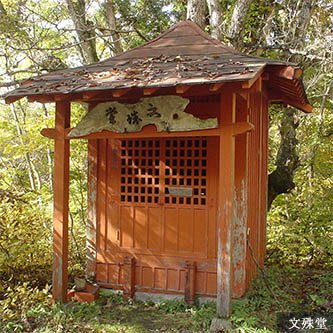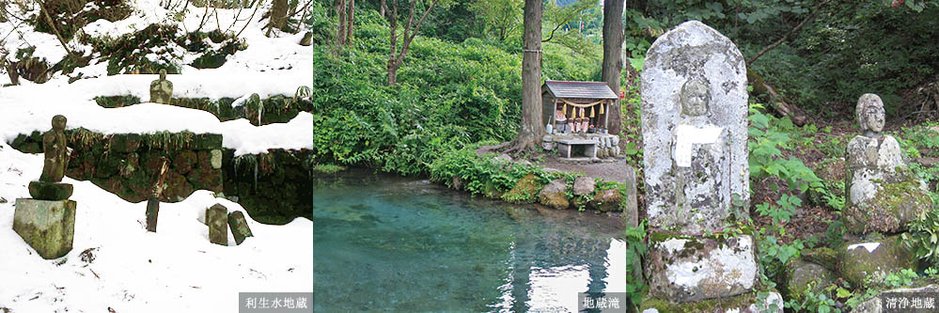Life and the Daisen Faith
The Daisen Roads, that formed due to the Daisen Faith and Daisen Gyuuba Ichi, and the lives of the people along its way
Since the Middle Ages, Daisen became the center of Daisen Faith religious circles and horse and cattle distribution circles, both in Japan and internationally. On the Daisen Roads, the roads radiating from Daisenji Temple (Bouryou, Odaka, Mizokuchi, Maruyama, Yokote, and Kawadoko Roads), so many people passed on the day before and after the livestock market that special arrangements had to be made at the border checks. The villages on the way to Mt. Daisen prospered by providing accommodations for the scores of merchants and pilgrims.

Along Yokote Road it was always very crowded, and the main roads of Sagarikaya and Midzukue have the appearance of those days, and, in the village along Bouryou Road the buildings where cows were kept during calving and the stones which they were tied to still remain. Especially at the Tokorogo farmhouses, cattle were kept on the same premises as the residence of the farmers, and the tradition of carefully raising the calves on holy water and herbs from Daisen in order to take them to the livestock market still remains.

On the Yokote Road, a torii gate for worshippers form the Sanyou area who ran into difficulties along the way and a "monjudou", where women worshiped, still remain, on the Kawadoko Road a moss covered stone-flagged road remains, and on both roads kilometers of Jizo statues remain.
The "Daisen Okowa" was a popular takeout meal for pilgrims. At the blessed foothills of Mt. Daisen, "Okowa" steamed with wild vegetables, bamboo shoots, chestnuts and mochi were always served in celebration meals. By virtue of being both good tasting and, if mochi rice was used, long lasting and filling, it quickly became a favorite portable meal of Daisen pilgrims. In addition, "Daisen soba", a grinded soba which is said to have been cultivated under the encouragement of Daisenji Temple's priests, was also served at the Gyuuba Ichi, and became a specialty of Daisen. These foods are still popular as the taste of Mt. Daisen today.
Daisen faith spreading to the surrounding areas

'Daisen Faith' events related to water, purifying mountain pond water through the "Mohitori Ritual" and the "Ikesan Ritual" by pouring sake into the pond then taking the water and pouring it into rice fields, are still continuing today. In addition, to pray for an abundant harvest, there is an event called 'Rallying the Mountain' before rice planting begins, and in the Houki and surrounding areas a rice planters' song called the 'Daisen Song'.
In Houki, because the age of 2 is considered bad luck, there is a custom called the 'Two Year Old Visit' that involves carrying one's 2 year old child to Daisenji Temple for the first visit of the New Year, and at the age of 13 there is a custom called the 'Thirteen Visit', a visit made to Daisenji Temple for good health. On both occasions people bring back souvenirs for their fellow villagers.
Another custom from the 'Daisen Faith' is for people from the Sanyou side of the mountains who have lost relatives to come all the way to visit Daisenji Temple in the hope that the lost relative will be saved by Jizo Bodhisattva at the "Sai no Kawara", the riverbed of souls in purgatory.
Thanks to Mt. Daisen

In this way, the 'Daisen Faith' and the 'Livestock Faith' derived from the life extending holy water of the 'Jizo Faith', and the prosperity of the livestock market, formed a large religious circle in Western Japan. It was as if Daisen's holy water over the years became the underground water of people's lives, and so local people still today continue to look up at Daisen and say "Thank you, Daisen" day by day.






